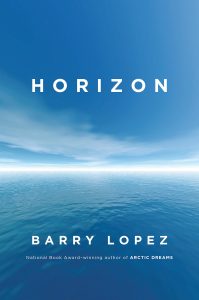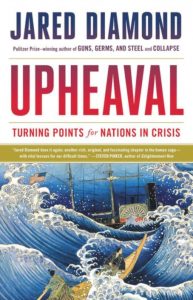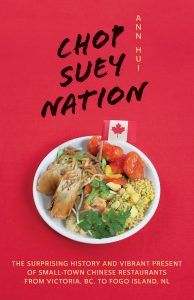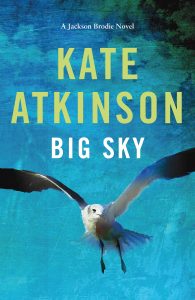These are the best books to read this summer 2019
Here are 15 titles to make your vacation, or just quiet afternoons on the deck, rich with stories and ideas

Hui at Taste of China restaurant: her book is part history, part memoir, part road trip (Photograph by May Truong)
Share
For many of us, summer means holidays. And for readers, that means more time between covers. Here are 15 new and recent works of fiction and non-fiction we hope will thrill, transport and enlighten book lovers.
NON-FICTION
No one has written more subtly, movingly or brilliantly in the non-fiction form about the interconnection of human culture and natural setting than Lopez. Arctic Dreams: Imagination and Desire in a Northern Landscape, his 1986 masterpiece, has never been out of print. That’s one of the landscapes Lopez, 74, revisits in reality and in memory—along with the Oregon coast, the Galapagos, East Africa, Australia, South America and Antarctica—in Horizon, an elegy for the planet electrified by flashes of anger. Not that they are the only places 30-odd years of travel and thought take Lopez’s mind—there is the “wonder and gratitude” invoked by encounters with black rhinos in southwest Africa and other times and places. Each time, Lopez considers the ruin (human and natural) already wreaked, the beauty that remains and the damage looming on the horizon, and tries to remain neither optimistic nor despairing. “I want,” he writes, “everyone here to survive what’s coming.”
—Brian Bethune
 From Bear Rock Mountain: The Life and Times of a Dene Residential School Survivor
From Bear Rock Mountain: The Life and Times of a Dene Residential School Survivor
By Antoine Mountain
A Dene artist from Fort Good Hope, N.W.T., Mountain is primarily a painter of landscapes, portraits and key elements of his people’s way of life. But he is also an inveterate writer and long-time columnist for the Yellowknife newspaper News/North. His writing can be needle sharp, but rarely direct—this is no linear autobiography, but an evocative story that winds back and forth from past to present, from the broad historical interaction of Indigenous peoples and Europeans to his own personal details. As Mountain’s precise subtitle asserts, he is a residential school survivor, but there is more to his experience than that. “No victim I,” Mountain, 69, writes, before warning non-Indigenous readers not to expect “pretty things . . . to assuage their collective guilt.” But there is beauty: beguiling tales of a childhood on the land and of his art school time in Florence, a painter’s-eye description of his extended family and searing school memories, all scenes from a remarkable life.
—Brian Bethune
In 1997, Guns, Germs and Steel made Diamond one of the most prominent—and controversial—public intellectuals in the U.S. Diamond’s bestselling account of how Europe’s resources (in disease resistance and plants and animals easy to domesticate), rather than its purported racial and cultural superiority, powered its takeover of the New World, angered fellow academics who thought he ignored the role of human agency. His new book can be read in part as a nod to that criticism. Diamond examines six nations at historical crisis points—Japan, Finland, Indonesia, Chile, Germany and Australia—to see if they responded in a way analogous to individuals in crisis. And whether paying close attention to the well-studied psychology of trauma response would be useful to statesmen. It’s an intriguing approach, and one that leads the author to some un-Diamond-like conclusions when he throws contemporary America into the mix: geography isn’t destiny. The U.S., acting like a patient resistant to therapy, is squandering its natural advantages through bad decisions.
—Brian Bethune
This engaging tour of small-town Asian restaurants derives emotional heft from descriptions of the heroic struggles of immigrants—including, as the author discovers as an adult, her own parents—dishing up Canadian-friendly “Chinese” dishes. Hui and her husband drove from B.C. to Newfoundland, visiting Chinese joints in spots including Vulcan, Alta.—named after the Roman god of fire and now a Star Trek shrine—to Fogo Island, N.L., where 55-year-old Feng Zhu Huang toiled every day of the year at her Kwang Tung Restaurant. Interspersed with the travelogue are chapters delving into the life of Hui’s father, who was born in south China and was left behind by his Canadian immigrant father before he was a year old, and by his mother when he was 11, not seeing them again until he was 23 or 24. Her probe yields another important story illustrating how discriminatory policies devastated so many Chinese families.
—Patricia Hluchy
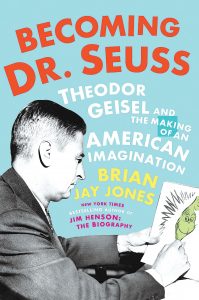 Becoming Dr. Seuss
Becoming Dr. Seuss
By Brian Jay Jones
It’s really all about The Cat in the Hat, both the making of a literary phenomenon like few others—published in 1957, when it sold a million copies, it still sells at least half that number annually—and the making of Dr. Seuss. As this compelling biography details, Theodor Seuss Geisel, then 53, was already famous as an animator, political cartoonist and the creative force behind a 13-year illustrated ad campaign for Flit insect repellent. He even had an honorary doctorate to validate his pseudonym. But Geisel had yet to achieve the perfect marriage he longed for between his iconic illustrations and his nonsense rhymes. Or his long-time goal—to write books young children would want to read. Then along came spectacular success in the form of an anarchic cat who has proven irresistible to two generations of kids, if not to its creator (he preferred the grumpy Grinch). And Theodor Geisel finally became Dr. Seuss.
—Brian Bethune
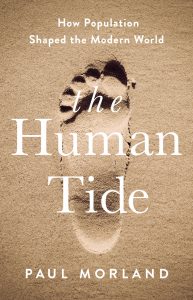 The Human Tide
The Human Tide
By Paul Morland
Demography may not be everything, but demographers can make a good case that it’s two-thirds of everything. The population revolution that began in Europe two centuries ago has had an enormous and continuing effect. Powered by a steep decline in childhood mortality, exploding European populations colonized the New World, with horrific effects on Indigenous peoples. That tide, which began receding in the West a half-century ago, is still cresting elsewhere: in 1950 there were three Europeans for every sub-Saharan African; by 2100 there will be six times as many Africans as Europeans. Our future, The Human Tide predicts, will come in three colours—greyer, greener and less white. From Brexit voters to racists chanting, “You will not replace us,” in Charlottesville, Va., the fear stoked by “less white” has been a key factor in surging xenophobia in the West, making Morland’s account not just an absorbing history of the demographic revolution but also a de facto political primer.
—Brian Bethune
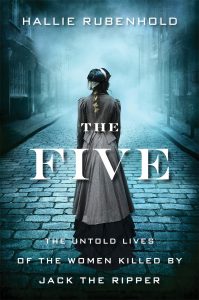 The Five: The Untold Lives of the Women Killed by Jack the Ripper
The Five: The Untold Lives of the Women Killed by Jack the Ripper
By Hallie Rubenhold
Ripperology has flourished for over a century. Debate continues to rage over who Jack the Ripper was, what became of him and how many women he slaughtered. But the five “canonical” victims—the women all experts believe the Ripper murdered in London in 1888—are treated as props to the story, just five luckless prostitutes. With passion and a relentless combing of public records, Rubenhold demolishes that idea. There is no good reason to believe three of the dead women were part of the sex trade, while another may have solicited when times were particularly hard; only the last victim, killed in her own bed, was a full-time prostitute. They were hardscrabble Londoners, constrained by class and gender in their ability to earn a living, and probably killed (except for the fifth) on a night poverty forced them to sleep in the streets. The Five is first-rate social history and more, a belated restoration of the victims’ dignity and humanity.
—Brian Bethune
FICTION
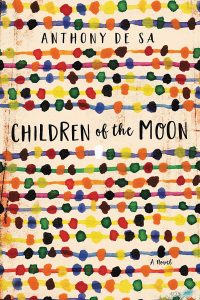 Children of the Moon
Children of the Moon
By Anthony De Sa
All wars, to quote the Vietnamese-American writer Viet Nguyen, are fought twice, once on the battlefield and once in memory. That includes conflicts forgotten by the world at large, like the 1970s struggle in Mozambique against Portuguese colonialism, the background for De Sa’s searing novel. The Toronto writer, an acclaimed chronicler of his city’s Portuguese community, had uncles who fought in Africa, none of whom wanted to talk about it. The memories of three characters tell the story: Pó, a 60-ish albino Maasai woman in Mozambique; her one-time husband and former child soldier Ezequiel, now demented and living in Toronto; and Serafim, a guilt-ridden Brazilian journalist. Marginalization dominates the Africans’ lives even before the wider violence arrives—the adopted child of missionaries, Ezequiel is fully accepted by neither colonizers nor colonized, while albinism puts Pó’s life at risk from birth. There are extraordinary moments in their story, even if very few are happy, and De Sa has woven a moving, memorable novel about it.
—Brian Bethune
By Helen Oyeyemi
From the witch’s house in Hansel and Gretel to that runaway cookie, gingerbread and children go together like Oyeyemi and witty prose. Serious themes about women and class in Britain run beneath the surface of this tale of teenaged Perdita and her immigrant mother Harriet. But this bewitching novel truly dazzles on its absurdist surface. Harriet lives by and for the family gingerbread recipe she grew up with in Druhástrana (no one in the novel is sure where this mysterious place might be found, although Oyeyemi offers a winking hint—the inhabitants sound like pro-Brexit voters in their rejection of all foreign influence). Harriet is addicted to making gingerbread: it is her all-purpose bribe and awkward means of approaching new acquaintances. Perdita is addicted to eating it, despite the fact it can kill her—she has celiac disease. When mother finds daughter in a gingerbread-induced coma, the crisis forces her to start explaining her surreal childhood, whether it unfolded in an alternative England or a faraway land, and Gingerbread really takes flight.
—Brian Bethune
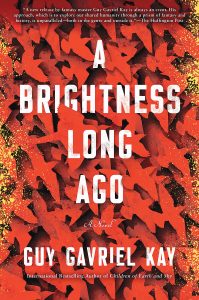 A Brightness Long Ago
A Brightness Long Ago
By Guy Gavriel Kay
It’s been almost three decades since Kay released Tigana, virtually inventing a fantasy sub-genre he has dominated since. That novel—set in the Peninsula of the Palm, modelled on Renaissance Italy—was the first of a series plotted against alternative versions of times and places ranging from medieval France to Tang Dynasty China. The Canadian author returns to an alt-Italy in this suspenseful tale of two rival mercenary leaders and the less powerful characters caught in their wake. The main narrator is Danio, a tailor’s son risen high in political service through his native intelligence. And, in his later-in-life retelling, by accidents of timing and impulse—lingering a few seconds in a darkened hallway just as an assassin arrives becomes a life-and-death matter for more than the individuals involved. Kay’s settings may change, but the main themes in all his books are who controls historical memory (political power or artistic works) and the role of contingency in human affairs.
—Brian Bethune
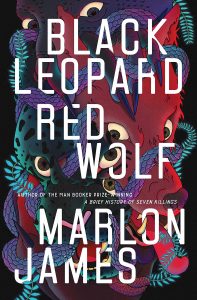 Black Leopard, Red Wolf
Black Leopard, Red Wolf
By Marlon James
Only a writer of James’s redoubtable talent—and swagger—could successfully follow up Booker-winning historical fiction with swashbuckling fantasy. Black Leopard, Red Wolf, the Jamaican-born author’s first novel after A Brief History of Seven Killings (2014), is set in a world based on African myths and narrated by the bounty hunter Tracker, who is dragged into an epic quest when he’s hired to find a mysterious missing boy. James rejects Western fantasy’s elves and dragons in favour of lightning-birds and were-leopards, and he punctures any potential pomposity with Tracker’s stinging sarcasm; indeed, the many brutal fight scenes are less engaging than the verbal sparring. The book has emotional heft, too, as Tracker, like The Wire’s Omar, turns from caustic lone wolf to avenging angel. He’s also a spinner of slippery stories, and two sequels are set to recount the same events from different points of view. May they be just as intense and inventive.
—Mike Doherty
Few authors occupy Atkinson’s enviable (and well-deserved) perch: she writes literary novels and a series featuring private investigator Jackson Brodie, and critics and readers love them both, for good reason. As appealing a character as Brodie’s combination of idealistic moral core and practical ruthlessness makes him, he is as much an observer of English life, placid surface and festering underground alike, as he is a prime mover of events. (In Big Sky, one of his clients can hardly be blamed for calling him useless.) As in so much modern European crime fiction, there is a backstory of human trafficking and childhood sexual abuse—a refrain of lost girls that haunts Brodie—which is overlaid by Atkinson’s very funny comedy-of-manners commentary. But at the end, the writer’s take is clear: the women, whether victims or criminals, are mostly still standing, while the men, vicious and seemingly all-powerful, are mostly dead.
—Brian Bethune
The Irish author’s second novel, like her much-heralded Conversations with Friends, is a deeply nuanced portrayal of relationships, their contradictions and miscommunications. Rooney is particularly adept at evoking powerful emotions: when Normal People’s senior high-schooler Marianne tells classmate Connell she likes him, “the intensity of the privacy between them is very severe, pressing in on him with an almost physical pressure on his face and body.” Connell’s single mother cleans the mansion of Marianne’s wealthy family. But the two are very clever and have a powerful, if uneasy, connection. The narrative follows them to Dublin’s Trinity College; in tow are Marianne’s legacy of family abuse and Connell’s deep, partly class-related insecurity. Because Rooney is 28 and writes about her cohort, she has been called the first great millennial novelist. But with Normal People she again proves she’s a formidable explorer of the human psyche.
—Patricia Hluchy
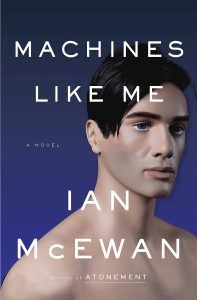 Machines Like Me
Machines Like Me
By Ian McEwan
McEwan somewhat haughtily insists that his provocative 16th novel is not science fiction, but he’s certainly exploring the genre’s primary preoccupation: “What does it mean to be human?” In an alternate-history U.K., where pioneering theorist Alan Turing survives long enough to develop artificial intelligence, protagonist Charlie Friend buys one of the first humanoid robots. He treats “Adam” at first as a servant and then as a sort of bodyguard when Charlie’s girlfriend is threatened by an ex-con who claims she falsely accused him of rape. The plot is vintage McEwan, with tense scheming, romantic entanglements and thorny moral dilemmas, although it’s slowed down by meandering chunks of exposition. As Adam becomes more independent, his undeviating idealism is both poignant and rather alarming. Another pressing question emerges: how will our society—built to accommodate our myriad beliefs, contradictions and deceits—deal with the absolutes of AI’s logic?
—Mike Doherty
 Bina: A Novel in Warnings
Bina: A Novel in Warnings
By Anakana Schofield
The acerbic elderly Irish woman who is the eponymous narrator—“that’s Bye-na not Bee-na,” she wants the reader to know—has an urgent story to tell. And her own way of telling it, one that parallels Schofield’s inimitable, blackly funny, envelope-pushing style. Warnings first: if a man comes to your door, don’t let him in, “even if you need something heavy lifted”; mind the Tuesdays, “very dangerous days”; do not make a decision if the tea does not taste right. Why anyone should follow this advice comes later, in fits and starts, between such musings as a consideration of those who wake up “beside people they are disappointed to discover aren’t dead.” But there is no other way to tell a story, argues Bina (and Schofield) in this thought-provoking marvel of a novel. “It’s how it is,” they address readers in a passage packed with imprecise pronouns, “And you never like how it is. It’s why you read in the first place.”
—Brian Bethune
